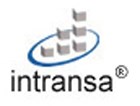Intransa Email Archiving

Email has quickly become an essential tool in the business environment and with it the demand for storage has grown rapidly. The growth of storage needed to support email applications is exacerbated by the myriad of multi-media attachments. And with the recent financial scandals, government regulations are being put in place that require the preservation of all emails in a number of instances. This compliance requirement will also drive the growth of storage for email.
To date, the majority of the email storage is still directly attached to email servers. As email storage capacity has increased or remote offices have opened, many businesses and organizations simply installed additional email servers with local storage. This has created a management nightmare. The multiple email servers require significant IT resources to maintain efficient operation, to back up all email data and to continue scaling storage capacity. This is a major challenge for today's budget-constrained IT organizations.
Networked storage offers a number of benefits that directly address the email storage challenges, such as storage and server consolidations for greater capacity and better server utilization. Unfortunately, a number of the most popular email systems, such as Exchange and Notes, are optimized for block storage and thus cannot effectively take advantage of file-based network-attached storage (NAS). At the same time, Fibre Channel-based storage area network (FC-SAN) solutions are often too expensive to justify and too complex to deploy.
Storage Grid Solution
A new generation of storage grid network solutions that are based on the standard Internet Protocol (IP) and Ethernet are now available. With iSCSI protocol standard, the storage grid offers a significantly more cost-effective alternative to the FC-SAN to address the ever-increasing email system storage needs.
Intransa's storage grid solution is a second-generation IP storage network soltuion. It interoperates fully with Microsoft's iSCSI initiator, the initiators from Linux, Solaris, and Hewlett Packard, as well as iSCSI host-bus adaptors (HBAs) from major vendors such as Intel, Adaptec, and qLogic. Standard Gigabit Ethernet (GbE) switches from all major networking vendors can be used to deploy an Intransa storage grid network, quickly and simply.
Intransa's storage grid platform is implemented on the patented IntraStor® distributed architecture. In addition to leveraging the standardized, commodity GbE and ATA disks, the IntraStor architecture enables a storage grid that can be scaled in capacity, performance and connectivity independently. The feature-rich platform provides enterprise class availability and virtual volume management, such as RAID, volume mirroring and snapshots, to IT organizations. The StorControl® management software offers both easy-to-use GUI and scriptable CLI to enable IT administrators to manage the storage grid remotely and centrally.
These capabilities allow IT organizations to configure mail-stores with different performance and availability characteristics (e.g. simple concatenation vs. mirrors vs. stripe-of-mirrors) for different classes of email "users." IT administrators can add storage capacities to the mail-stores and log directory dynamically and on-demand, with a simple drag-drop, without having to shut down the email servers for reconfiguration. With point-in-time snapshot, the email data can be backed up without impacting normal email services, thus eliminating the diminishing backup window headache. Similarly, the inexpensive, network-addressable ATA storage enables instant email data restore from disk instead of tape archive.
Email servers can be consolidated into a few clusters that are geographically separated. The email server clusters share the storage grid capacity over the standard IP network infrastructure. This creates a high availability configuration without single points of failure. In addition, multiple IntraStor systems can be deployed with different email clusters and yet managed together to provide business continuity through reciprocal back-up.
In leveraging the IP server and network knowledge base of the existing IT staff, Intransa's IntraStor platform can be deployed quickly and inexpensively as part of an email server and storage consolidation strategy. At the same time, it provides the foundation to grow storage incrementally and cost-effectively with business needs. Beyond these benefits in investment protections, an intelligent storage grid, such as IntraStor, enables IT to continue to meet the demands of the organization while minimizing the demand on precious departmental resources.
